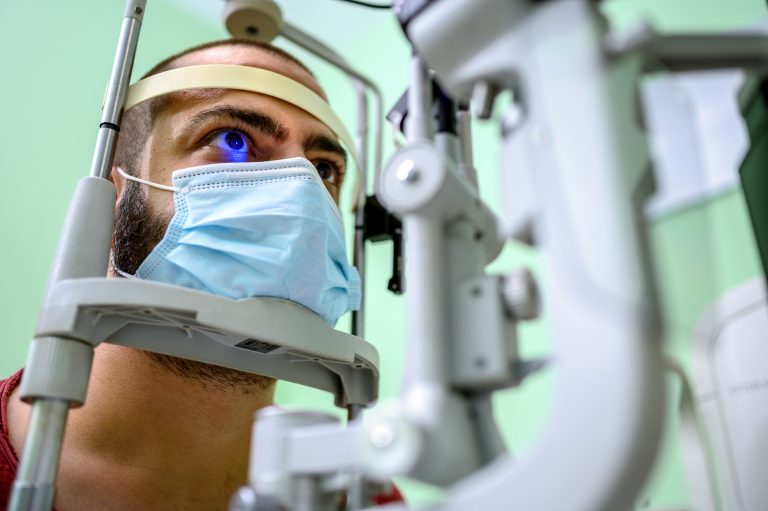
Results from an Australian study suggest that combining testing for single mutations with polygenic risk scores could dramatically improve predictions of those most likely to develop the eye condition glaucoma.
This is important, as while open-angle glaucoma—the most common form of the disease—is very treatable, it often goes undiagnosed and can cause irreversible sight damage before a diagnosis is reached.
“Early diagnosis of glaucoma can lead to vision-saving treatment, and genetic information can potentially give us an edge in making early diagnoses, and better treatment decisions,” says co-lead researcher Associate Professor Owen Siggs, from Flinders University in South Australia and the Garvan Institute of Medical Research in Sydney, NSW.
Glaucoma is known to have a strong genetic component. Heterozygous variants in the gene MYOC account for 2–4% of all cases and are tested for in some hospitals and academic centers. But other genetic variants also contribute to risk for this disease, if to a lesser extent.
While polygenic risk scores, comprised of panels of relevant risk-associated variants such as SNPs, are already in use for conditions such as cancer and cardiovascular disease, there has been less investigation into creating such a score for glaucoma risk prediction.
As reported in the journal JAMA Ophthalmology, Siggs and co-authors created a polygenic risk score including more than 2500 disease-associated variants (not in MYOC) using data from 2507 patients enrolled in the Australian and New Zealand Registry of Advanced Glaucoma (ANZRAG) and 411,337 individuals from various cohort studies including individuals of European ancestry from the UK Biobank.
They found that individuals in the top 5% of polygenic risk had an almost three-fold increased risk for glaucoma compared with the general population. In comparison, people who are heterozygous for the MYOC p.Gln368Ter variant have an approximately four-fold increased risk for open-angle glaucoma, compared to non-carriers.
Importantly, significantly more people in the ANZRAG cohort had high polygenic risk than were carriers for the MYOC risk variant at 15.7% versus 2.6%. In a sample of the general population, high polygenic risk was found in 5% of individuals and the MYOC variant in 0.32%, a 15-fold difference.
“Genetic testing is not currently a routine part of glaucoma diagnosis and care, but this test has the potential to change that. We’re now in a strong position to start testing this in clinical trials,” says Jamie Craig, a professor and consulting ophthalmologist who also runs a glaucoma research program at Flinders University, who co-led the study.
Current screening guidelines for glaucoma take into account risk factors such as family history or ancestry, and age, but this kind of genetic testing could allow many more people to be diagnosed early enough for treatment to be effective.
“The use of genetic risk stratification may be a valuable screening adjunct, allowing higher risk individuals to be monitored earlier and more frequently, and lower-risk individuals later and less frequently,” write the authors.



![Metsera Launches with $290M to Develop Next Generation Weight Loss Products Genomenon said today it has partnered with Rhythm Pharmaceuticals to create a database of genetic mutations associated with obesity as documented in published studies. Rhythm plans to use the data to better understand rare genetic disorders of obesity. [Visual Mozart/Getty Images]](https://www.insideprecisionmedicine.com/wp-content/uploads/2019/01/1628-218x150.jpeg)









